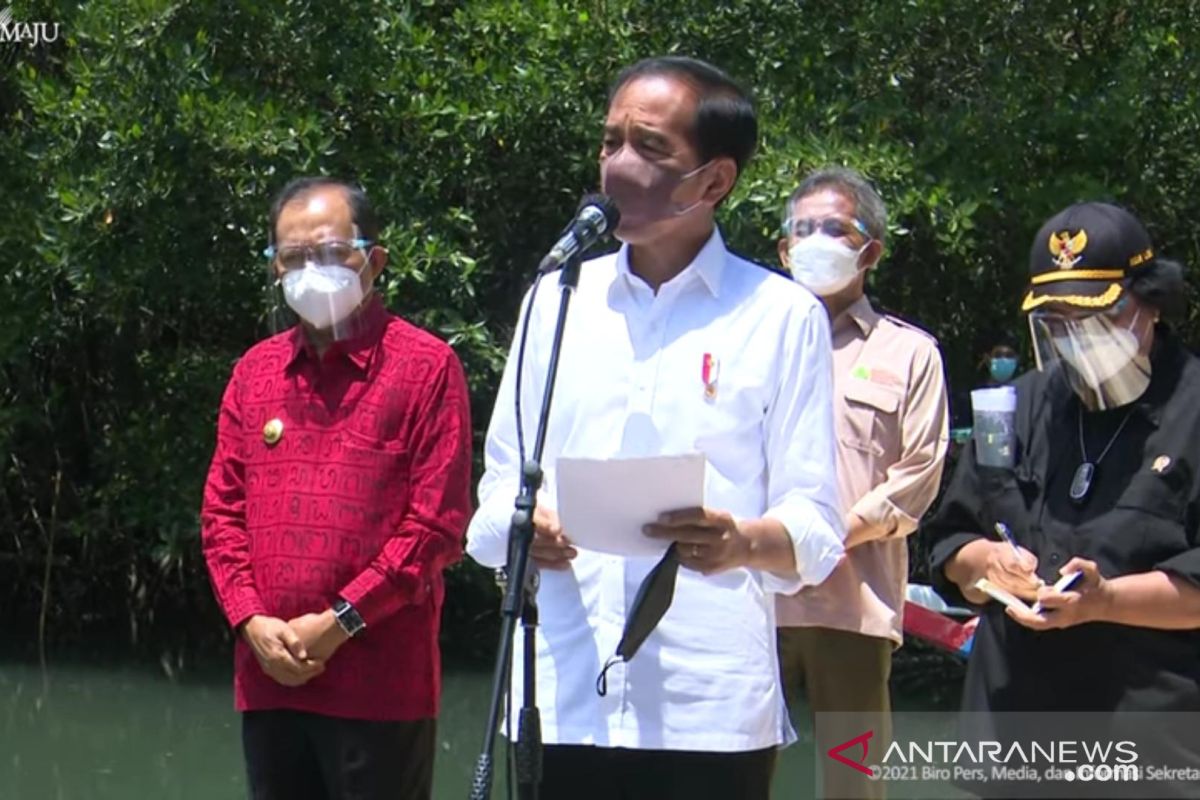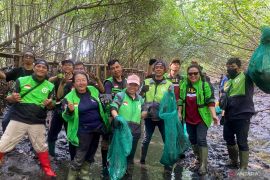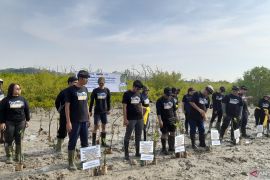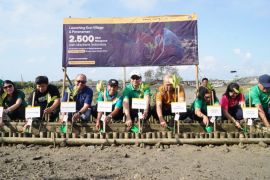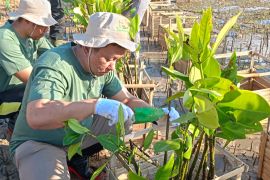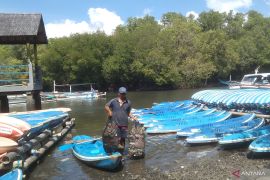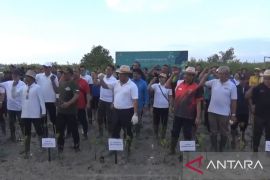"This model of mangrove rehabilitation is what we want to replicate in other provinces," he affirmed on Friday.
President Jokowi visited the location to observe the implementation of mangrove planting, along with Minister of Environment and Forestry Siti Nurbaya Bakar, Bali Governor I Wayan Koster, and other relevant officials.
"We will continue to do this in coastal areas to restore and preserve our mangrove forest areas and also to anticipate and mitigate impacts of global climate change that continue and will occur," Jokowi remarked.
The president later explained that the Ngurah Rai Forest Park has been under construction since 2003.
"It is becoming a pilot site for mangrove rehabilitation forest ecosystems in our country that combines education, education, and tourism in addition to strengthening the community's economy," the head of state noted.
President Jokowi is optimistic that by conducting mangrove planting, the area would be able to reduce wave energy and protect the coast from abrasion. Mangrove rehabilitation is also expected to inhibit water intrusion and improve the environmental quality both in the coastal environment and habitat on the coast.
Along with environmental improvement, Jokowi is also optimistic that mangrove rehabilitation will increase the production of fish and other marine products.
"This is especially for crab production that is suitable for mangroves. In addition, it will increase the community's income, and this may later become one of the venues that we will show to G-20 leaders next year," he emphasized.
The area of the Ngurah Rai Forest Park is administratively located in Tanjung Benoa and its surroundings in the Kuta and South Kuta Sub-districts, Badung District, covering an area of 627 hectares, and Serangan Island, South Denpasar Sub-district, Denpasar City spanning an area of 746.50 hectares.
This area has abundant natural beauty and biodiversity in the form of mangrove forests, animal and bird species, and aquatic species, such as fish, mollusks, and shrimps.


